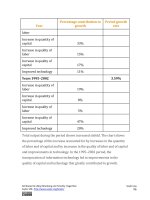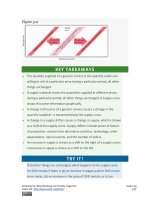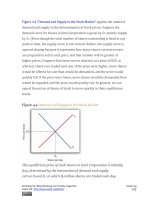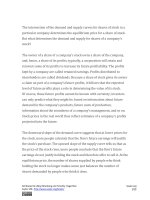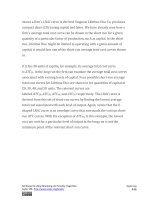Authors libby rittenberg 861
Bạn đang xem bản rút gọn của tài liệu. Xem và tải ngay bản đầy đủ của tài liệu tại đây (384.1 KB, 1 trang )
Case in Point: The United States and the
European Union—Worlds Apart
The European Union’s initial reaction to the proposed merger of Boeing
and McDonnell Douglas in 1997 was to threaten to impose tariffs on
Boeing planes entering the continent if the deal went through. The issue
brought the United States and its European partners to the brink of a trade
war.
Then President Bill Clinton responded to the EU’s threat saying, “I’m
concerned about what appears to be the reasons for the objection to the
Boeing-McDonnell Douglas merger by the European Union, and we have
some options ourselves when actions are taken in this regard.” The
president seemed to be suggesting retaliatory trade sanctions, such as U.S.
tariffs on European-made planes.
At the last minute, the EU allowed the merger on two conditions: that
Boeing give up its exclusive supply deals and agreed to license to its
competitors (meaning Airbus) McDonnell technology that had been
developed with U.S. government support.
In the press, the incident was reported as an incipient trade war. Europe
was trying to protect its own airline industry; the United States its own.
According to New York University economist Eleanor Fox, though, the
dispute stemmed not from countries trying to protect their own companies
but from differing antitrust laws.
Ms. Fox argues that U.S. antitrust law is consumer oriented. The question
for the Federal Trade Commission was whether the merger made
Attributed to Libby Rittenberg and Timothy Tregarthen
Saylor URL: />
Saylor.org
861
